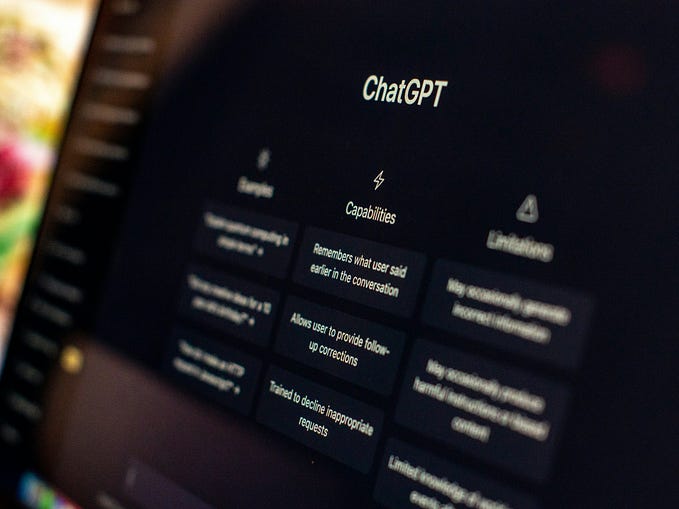What is prompting in AI and why is it crucial for effective within AI communication?

Prompting in AI refers to the art of crafting inputs or questions that guide artificial intelligence systems to generate relevant and accurate responses. An effective prompt is clear, concise, and focused, ensuring that the AI understands the user’s intent and delivers the desired output.
The importance of prompting cannot be overstated. It plays a pivotal role in maximizing the potential of AI technologies and ensuring a seamless user experience.
By mastering the art of prompting, users can obtain precise information, enhance decision-making, and unlock innovative solutions. Furthermore, it minimizes misunderstandings, reduces errors, and contributes to more responsible and ethical use of AI.
Beyond that, a good prompt uses less #tokens, can become a competitive advantage in the job search if you are a #promptengineer and now you can learn more about it in this article.
A prompt in artificial intelligence communication is a statement, block of code, or string of words used to elicit a specific response from an AI model. #AI #promptengineering is the process of designing and creating prompts for AI models to train them to perform specific tasks. It involves selecting the appropriate data type and formatting it so the model can understand and use it to learn.
The quality of the prompt plays a significant role in determining the relevance and usefulness of the AI’s output. Crafting effective prompts is essential for obtaining desired responses and maximizing the value of AI interactions.
Example: Suppose you want to get information about the benefits of exercise. An ineffective prompt might be “exercise,” which is too vague and might not generate a helpful response. A more effective prompt could be “What are the health benefits of regular exercise?”
Here’s a complex prompt example for generating an AI-written article on the impact of artificial intelligence on the job market:
Write a well-researched, 1500-word article on the impact of artificial intelligence on the job market, focusing on both the positive and negative effects. The article should include the following sections:1. Introduction: Briefly introduce the topic and provide an overview of the impact of AI on the job market.
2. Background: Discuss the history of AI and its development over the years, including key milestones and breakthroughs.
3. Positive Impact: Analyze the ways AI has created new job opportunities and increased efficiency in various industries. Include real-world examples and statistics to support your points.
4. Negative Impact: Explore the concerns around job displacement and the potential loss of certain job roles due to AI. Address the skills gap and the need for retraining and reskilling workers.
5. Future Outlook: Discuss the potential future developments in AI, including the integration of AI and human labor, and the importance of policy and regulation to ensure a balanced job market.
6. Conclusion: Summarize the key points and provide recommendations for businesses, policymakers, and individuals to adapt to the changing job market due to AI.The article should be written in an engaging and informative tone, targeting a well-informed audience with a good understanding of technology and economics. Use reputable sources for information and statistics, and cite them appropriately. [influencermarketinghub.com](https://influencermarketinghub.com/ai-prompt-optimization/), [dataconomy.com](https://dataconomy.com/2023/01/what-is-ai-prompt-engineering-examples-how/), [re-thought.com](https://re-thought.com/how-to-create-effective-prompts-for-ai-image-generation/), and [build5nines.com](https://build5nines.com/crafting-effective-ai-prompts-for-improved-content-generation-a-chatgpt-guide/) can be used as reference materials.
This example prompt is complex because it:
- Specifies the desired word count and topic.
- Outlines the structure of the article with section headings.
- Details the content to be included in each section.
- Describes the target audience and the tone of the article.
- Mentions reputable sources to be used for information and statistics.
Brackets in Prompting
Often times, we also use brackets to make prompts more effective
AI prompts can be utilized for various purposes such as content creation, idea generation, and image generation. Here’s a set of AI prompts and tips on using brackets effectively:
Content Creation Prompts:
- “Write a 500-word essay about the effects of capitalism, in the style of Allen Ginsberg”
- “Create a headline using the keywords cake and holidays.”
Image Generation Prompts:
- “Generate an image of a golden retriever.”
- “A developer working in an office, photo, detailed image, 4K.”
Now using brackets for more effective prompts:
Brackets can be used to provide additional information or clarity to the AI model. For example, you can use brackets to specify a format or style for the generated content:
- “Write a 500-word essay about the effects of capitalism [in the style of Allen Ginsberg].”
- “Create a headline using the keywords [cake] and [holidays].”
When working with AI image generation, brackets can be used to provide more specific instructions or details:
- “Generate an image of a [golden retriever] [in a park setting].”
- “A developer working in an office [photo], [detailed image], [4K resolution].”
Can I use brackets for other types of AI tasks besides content creation and image generation?
Yes, you can use brackets for other types of AI tasks besides content creation and image generation. Brackets can be helpful in providing additional information or specifying the desired output for various AI tasks. Here are a few examples:
Audio and Video Transcription:
- “Transcribe the following audio file [in English] [with timestamps].”
- “Convert the following video to text [with speaker labels].”
Language Translation:
- “Translate the following text from [English] to [Spanish]: ‘Hello, how are you?’”
- “Translate the following article [from French] to [German].”
Keyword Research:
- “Find the top 10 keywords related to [digital marketing] [in the United States].”
- “Generate a list of long-tail keywords for [electric bikes] [in the United Kingdom].”
Content Optimization:
- “Optimize the following blog post for SEO [targeting the keyword ‘vegan recipes’].”
- “Analyze the sentiment of the following text [positive, neutral, or negative].”
Using brackets can help you communicate your requirements more effectively to the AI model, leading to more accurate and relevant outputs. Remember to be specific and clear in your instructions to achieve the best results.
Why prompting for AI is an important skill for several reasons:
Prompting for AI is an important skill for several reasons, as it greatly influences the quality and usefulness of AI-generated responses. And you can learn how to prompt for free with this website: https://learnprompting.org/docs/tooling/tools
Here are some key reasons why crafting effective prompts is essential:
- Relevance and accuracy of responses: A well-crafted prompt ensures that the AI understands the user’s intent, leading to more relevant and accurate responses. Conversely, vague or poorly structured prompts may result in less useful or incorrect outputs.
- Efficiency and productivity: Effective prompts can save time and resources by providing the desired information or results in fewer interactions. This efficiency can enhance productivity, both for individual users and organizations that rely on AI systems.
- Minimizing misunderstandings: Clear and concise prompts help reduce the likelihood of miscommunication between the user and the AI. This can prevent potential errors or the need for additional clarifications, contributing to a smoother user experience.
- Better user experience: Crafting effective prompts can improve the overall user experience, as users are more likely to obtain the information or assistance they seek. This can, in turn, increase user satisfaction and the perceived value of AI systems.
- Maximizing AI potential: By mastering the art of prompting, users can better leverage the full potential of AI systems. This can lead to new insights, enhanced decision-making, and innovative solutions that might not be possible without effective communication with the AI.
- Encouraging responsible AI use: Crafting effective prompts can also help ensure that AI systems are used responsibly and ethically. For instance, carefully phrased prompts can guide the AI to avoid generating content that might be harmful, misleading, or biased.
To sum up, prompting for AI is an essential skill as it plays a critical role in obtaining accurate, relevant, and useful responses from AI systems. It contributes to better user experiences, increased efficiency, and more responsible use of AI technologies.
Prompting for AI is a necessary skill because it allows us to effectively communicate with AI models and get the desired output. By mastering the art of prompting, we can leverage the potential of powerful generative models, such as creating cool stories, amazing images, or other features like text summarizers or automatic video editors while saving time, tokens and in the end: Money.
Be prepared, by not only learning how to prompt but beyond
Yes you can learn how to prompt, free by the way with the following websites. There are several resources available for learning how to create effective prompts for AI, specifically for AI image generation and text-to-image AI generators. Here are some of the key resources and tips:
- re-thought.com provides a comprehensive guide on creating effective prompts for AI image generation. It covers the basic anatomy of effective prompts, tips to keep in mind, and examples of different prompts.
- springboard.com emphasizes the importance of understanding the prerequisites before learning AI. A solid foundation in areas such as programming, linear algebra, statistics, and probability is essential for diving deep into AI.
- udemy.com offers a course on mastering prompt engineering. This course covers advanced techniques, the anatomy of an engineered prompt, the ‘prompt mindset’, and advanced concepts like one-shot, few-shot, and zero-shot cot.
- Phraser.tech — a prompt builder for multiple neural networks (AIs).
- Text to Image prompt generator — a prompt builder for artistic prompts.
- Lexica.art — a collection of prompts and their resulting images produced with Stable Diffusion.
Why you need to prepare now
In theory, we all can benefit significantly from not only prompting but working in general with AI, and by preparing ourselves to work alongside these technologies, we can maximize these benefits. Here are some ways human workers can benefit from AI and how we can ensure we are prepared:
- Enhance productivity and efficiency: AI can automate repetitive tasks, allowing human workers to focus on more creative, strategic, and complex tasks, thereby improving overall productivity and efficiency.
Preparation: Embrace AI technologies in the workplace and invest time in learning how to use them effectively.
- Improve decision-making: AI can analyze large amounts of data quickly, providing insights that can help human workers make better decisions.
Preparation: Develop data literacy and learn how to interpret AI-generated insights to make informed decisions.
- Personalized learning and skill development: AI can provide personalized learning experiences by identifying skill gaps and suggesting appropriate training.
Preparation: Engage with AI-driven learning platforms and commit to continuous learning to stay competitive in the job market.
- Enhancing collaboration: AI can help facilitate collaboration between team members, especially in remote work environments, by streamlining communication and organization.
Preparation: Adopt collaborative tools that incorporate AI and learn how to leverage them to improve teamwork.
- New job opportunities: As AI technology advances, new jobs and industries will be created that require a combination of human and AI skills.
Preparation: Stay updated on the latest AI developments and identify emerging industries where your skills can be applied.
To ensure we are prepared to work with artificial intelligence, we can take the following steps:
- Education and upskilling: Pursue education in AI-related fields and develop skills relevant to the AI-driven job market, such as data analysis, programming, and machine learning.
- Adaptability and flexibility: Be open to change and adapt to new technologies as they emerge. Embrace the idea of lifelong learning.
- Develop emotional intelligence and soft skills: AI cannot replace human empathy, creativity, and communication skills. By developing these abilities, we can work more effectively with AI and maintain our value in the workplace.
- Participate in AI policy discussions: Engage in conversations about AI ethics, regulation, and responsible use to ensure that AI is developed and deployed in a way that benefits everyone.
- Advocate for responsible AI: Promote transparency, accountability, and ethical use of AI technologies to ensure that they serve the best interests of humanity.
And for the rest? #askRoger — happy prompting!







